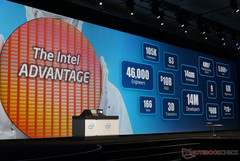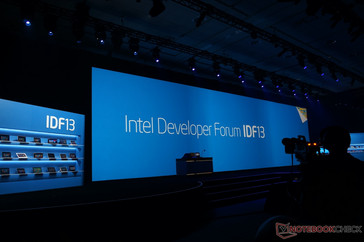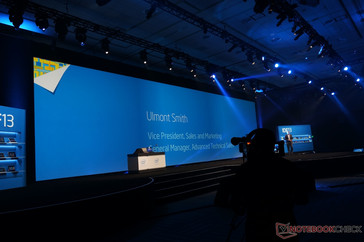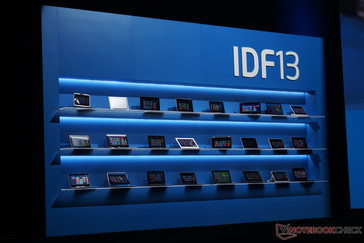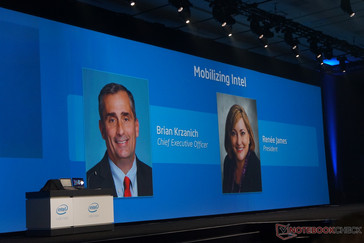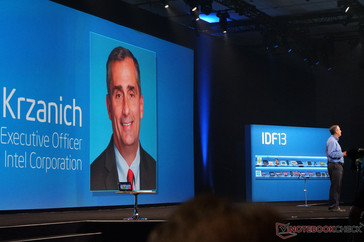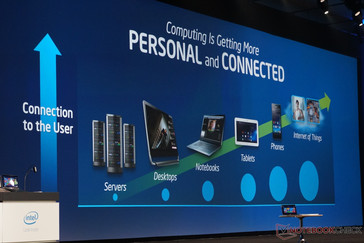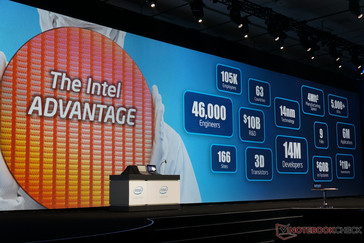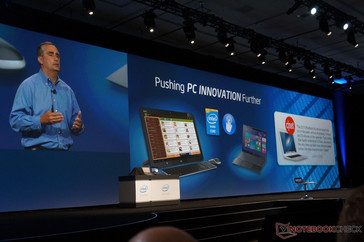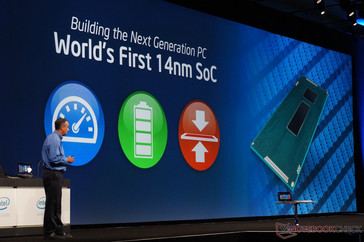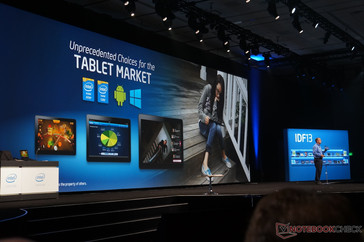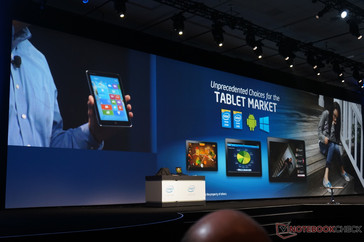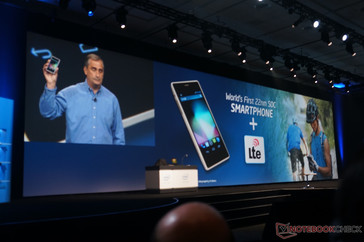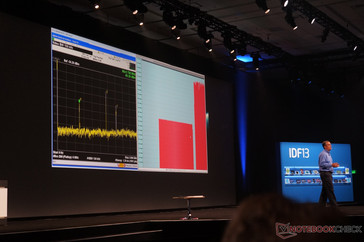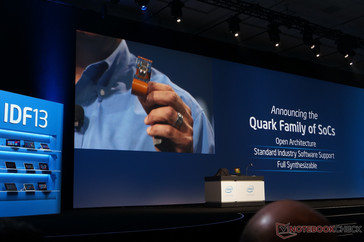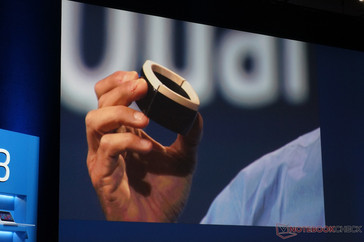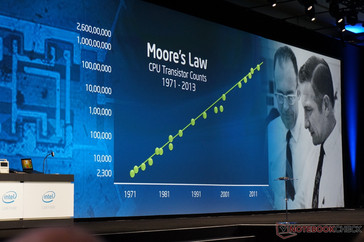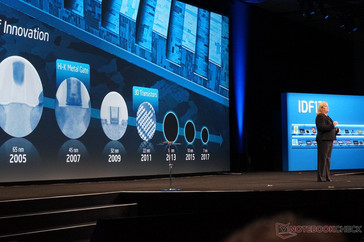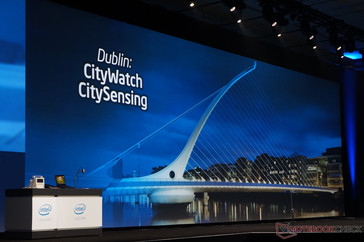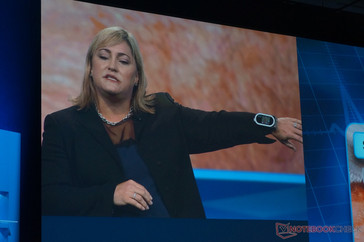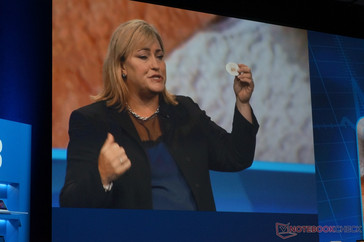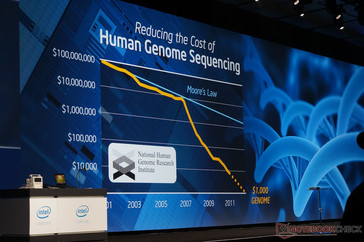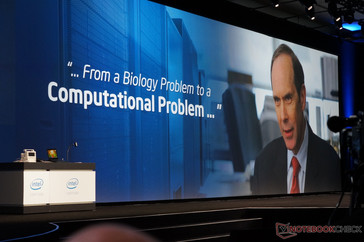The annual Intel Developer Forum began today in San Francisco, promising over 170 technical sessions and kicking off with the company's keynote address. CEO Brian Kraznich and President Renee James took to the stage and announced the new Quark SoCs as well as improvements to their current line of products.
For starters, Intel stressed a focus on shifting from CPUs to SoCs, touting integration and system-centric solutions as the way forward into more personal computing. On that note, the company's new line of Quark SoCs was introduced, coming in at 1/5th the size of the current Atom generation and using only 1/10th the power. Intel envisions the new chips as a primary source of power for the upcoming wave of wearable accessories, with applications ranging from the medical industry to smartwatches and bracelets.
Kraznich also had a few devices to show on stage, including a fanless Haswell Core i5 laptop from HP which should be coming soon. In addition, the keynote include a brief demonstration of the new Broadwell SoC, a 14nm version of Haswell which should be coming later this year and offers up to 30% power improvements while maintaining the same performance.
The keynote also addressed what Intel believes to be a "new frontier", 2-in-1 devices that contain multiple processors and allow the choice between different operating systems. One example is Lenovo's Windows 8/Android hybrids, with expectations of over 60 similar systems by the end of 2013. Other topics that Kraznich went over included the world's first 22nm smartphone with fully functional LTE as well as LTE Advanced which supports speeds of up to 70MBit/s (up from 35) with an ultimate goal of 150MBit/s.
President of Intel, Renee James, followed up Kraznich with her own talk and outlined Intel's vision of the future. One arena the company is interested in is that of managing megacities, with sensors automatically diverting traffic away from high water areas in Dublin's CityWatch program. Healthcare is another area the company expects to see many improvements, with integrated computing and wearable devices paving the way.
One such example is MC10, a flexible skin patch that sends a constant stream of data, allowing real-time monitoring of vital signs and other pertinent lab values. Of course, the applications are limitless, extending to cancer genome sequencing and early heart attack warnings, all made possible through the next generation of microprocessors.
Intel made sure IDF kicked off right with their keynote teasing exciting products, with more details coming over the next few days. We'll be sure to keep you posted with other developments during our stay here in San Francisco, so stay tuned for more.
Source(s)
Own


 Deutsch
Deutsch English
English Español
Español Français
Français Italiano
Italiano Nederlands
Nederlands Polski
Polski Português
Português Русский
Русский Türkçe
Türkçe Svenska
Svenska Chinese
Chinese Magyar
Magyar